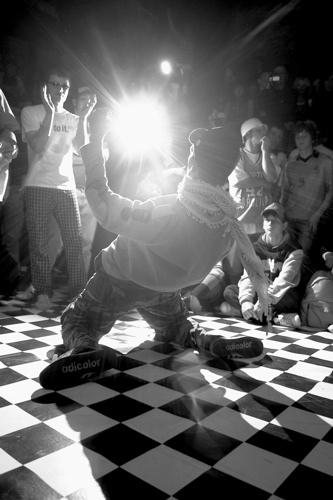Jazz dance
Jazz dance developed alongside jazz music in new orleans in the early 1900s. The steps and essential style of this dance, however, originated from dances of Africans brought to the Americas as slaves. Originally, the term jazz dance encompassed any dance done to jazz music, including both tap dance and jitterbug.
Over time, a clearly defined jazz genre emerged, changing from a street dance to a theatrical dance performed on stage by professionals. Some scholars and dancers, especially Swing and Lindy Hop dancers, still regard the term jazz dance as an umbrella term which includes both the original and the evolved versions: they refer to the theatrical form of jazz dance as modern jazz.
Different Styles of Jazz DanceCakewalk
The cakewalk style of jazz dance was a socially acceptable way slaves made fun of their owners. Dances were usually held at the master's house on the plantation and often took the form of a competition with cake as the reward for the winning dancers, hence the name of the style. Slaves would line up and high step in a straight line, mimicking their masters and other aristocrats. The style died out between 1915 and 1920.
Black Bottom
The black bottom style of the early 1900s earned its name from the slapping of the bottom during the dance. Soloists or couples hopped forward and backward, stamped their feet and gyrated their pelvises, all while slapping their own bottoms.
Charleston
The Charleston first became a popular jazz dance style in the 1920s and is still being practiced today. The basic step of the Charleston involves pivoting the feet in and out while straightening and bending the knees. Weight is shifted from foot to foot and the unweighted foot kicks out at an oblique angle.
The Lindy Hop and Jitterbug
The Lindy hop, characterized by breakaways from a couple's embrace to engage in intricate solo footwork, is often called the jitterbug today. The style originated in the Savoy ballroom in Harlem in the late 1920s. According to The Lindy Circle website, the name jitterbug may have referred to the way white people danced the Lindy hop, which appeared to some as though they were intoxicated. Today, the jitterbug name is used for a variety of different styles in different places.
Swing and Boogie Woogie
Swing dance and the Lindy hop were terms used interchangeably for the same dance style up until 1945, when other forms of swing dancing were invented, making the Lindy hop just one of many styles of swing dance. The boogie-woogie is a swing style where dancers move to a blend of big-band swing and blues music beats. The boogie-woogie is generally a fast style involving flying feet, hops, stomps and jumps.
Hip-hop dance refers to street dance styles primarily performed to hip hop music or that have evolved as part of hip-hop culture. It includes a wide range of styles primarily breaking, locking, and popping which were created in the 1970s and made popular bydance crews in the United States. The television show soul train and the 1980s films breakin', beat street, and wild styleshowcased these crews and dance styles in their early stages; therefore, giving hip-hop mainstream exposure. The dance industry responded with a commercial, studio-based version of hip-hop—sometimes called "new style"—and a hip-hop influenced style of jazz dance called "jazz-funk". Classically trained dancers developed these studio styles in order to choreograph from the hip-hop dances that were performed on the street. Because of this development, hip-hop dance is practiced in both dance studios and outdoor spaces.
The History of Hip-Hop dance encompasses
the people and events since the late 1960s that have contributed to the
development of the early hip-hop dance styles: uprock, breaking, locking, roboting,
boogaloo, and popping. black americans and latino
americans created
uprock and breaking in New York City. Black americans in California
created locking, roboting, boogaloo, and popping—collectively referred to as the funk styles. All of these dance styles
are different stylistically. They share common ground in their street origins
and in their improvisational nature.

